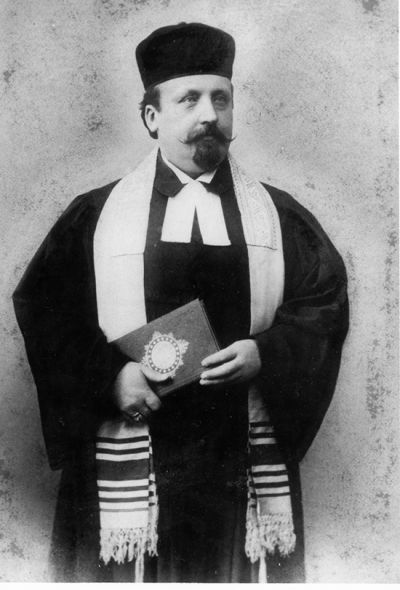The Polish-Jewish prayer house in Remscheid 1928–1933

The Polish-Jewish prayer house on Bismarckstraße was only used as a religious centre for a few years. When Jewish society assets all over the country were confiscated after Hitler’s seizure of power in 1933, Nazi organisations moved into the Remscheid People’s House and the prayer house had to be abandoned.[10] Henceforth, orthodox Remscheid Jews gathered for services in private prayer rooms. The increasing marginalisation and persecution of the Jewish population also hit Polish Jews who were subjected to particularly savage harassment by Nazi propaganda that talked of “East Jews” and “stinking Jews”. Many of the immigrants from Eastern Europe had sent their children to secondary education and now saw that there was no longer any future for them in Germany. And since they had no means to finance their children’s further education in other Western countries the only alternative was Palestine. So as early as 1933 young Jews began to leave Remscheid for Palestine with the help of Zionist organisations. The lack of savings – most Jews ran tiny businesses that provided just enough money to be able to live – was also a reason why the older generation and the tiny children remained in Germany: they simply could not afford to emigrate. In addition their prospects of obtaining a visa to emigrate to other countries in the west were very small, because the quota for Polish citizens for countries like the USA were almost non-existent.[11]
In autumn 1938 Polish-Jewish migrants were the victims of an utterly unexpected political development. In order to pre-empt the mass expulsion of Polish Jews from the German Reich the Polish government published an edict in October 1938 which removed Polish citizenship from all those who had lived abroad continuously for more than five years, if they had not obtained a special endorsement in their passports from their relevant Polish consulates by the 30th October 1938. When the authorities in Berlin learnt of this edict, on 27th October 1938 they issued a notice of expulsion to thousands of Polish Jews telling them they would be arrested within a few hours and deported over the Polish border either by foot or in collective transports. Between 15,000 and 17,000 people in the Reich were affected by this mass deportation, known as the “Poland action”.[12]
[10] The building was destroyed in the Second World War and the site was newly constructed. Verbal information from J. Bielstein, Remscheid.
[11] Bilstein, Juden in Remscheid, p. 89: and, Ostjuden in Remscheid, pp. 54-55.
[12] Tomaszewski, Jerzy: Auftakt zur Vernichtung, pp. 100-144. Tomaszewski, Jerzy.: Przystanek Zbąszyń.


![South wall on the left with illustrations of the Mishneh tractate ‘Pirkei Avot’ [Chapters of the Fathers] South wall on the left with illustrations of the Mishneh tractate ‘Pirkei Avot’ [Chapters of the Fathers] - In: „Aus alter und neuer Zeit“.](/sites/default/files/styles/width_100_tiles/public/assets/images/suedwand_links.jpg?itok=2lMG07mE)







